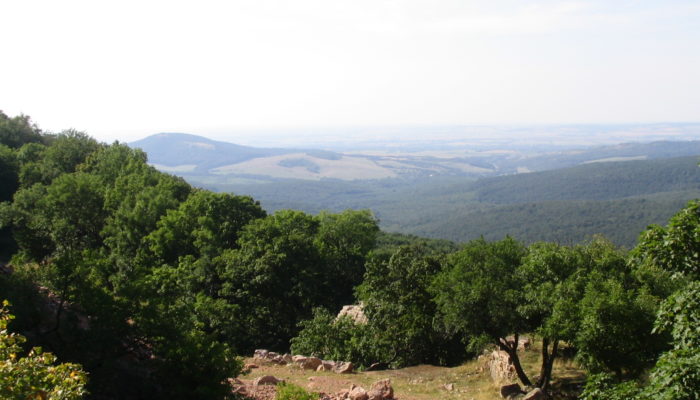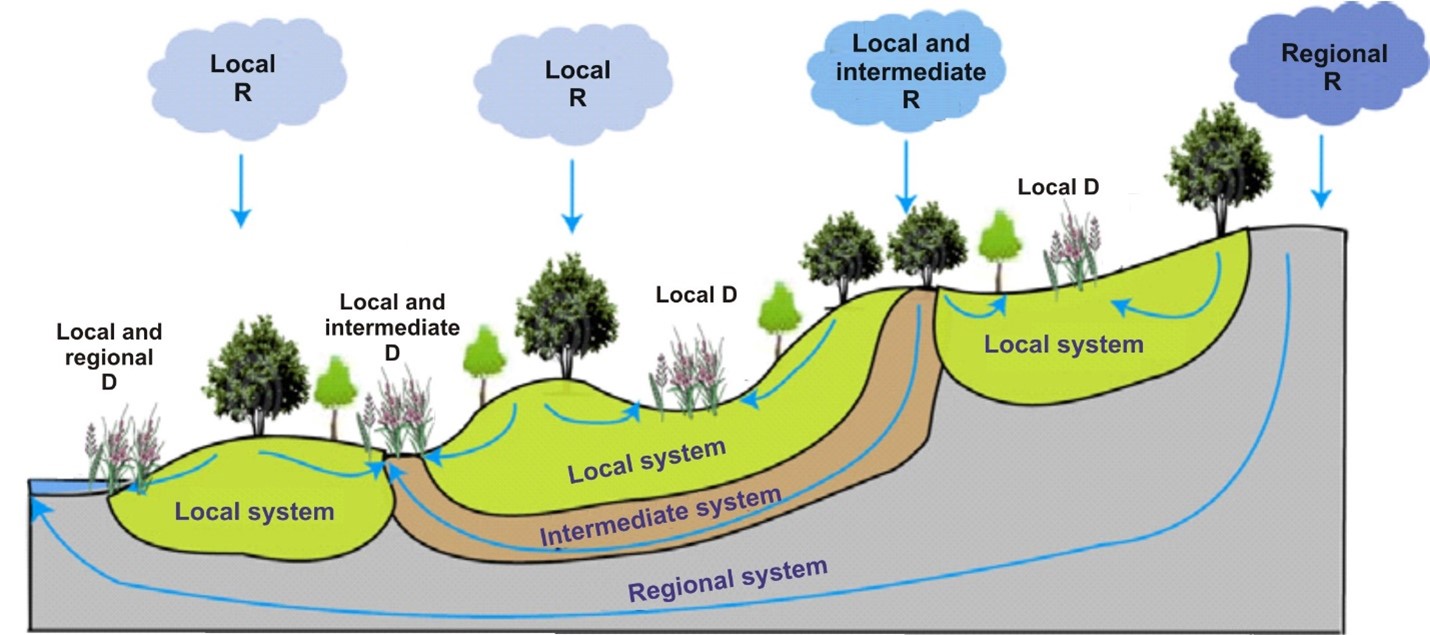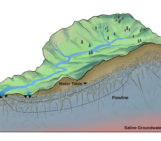
by David Litwin, licensed under a Creative Commons Attribution-ShareAlike 4.0 International License.
Article: Springs regarded as hydraulic features and interpreted in the context of basin-scale groundwater flow
Authors: Tóth, Á., Kovács, S., Kovács, J., & Mádl-Szőnyi, J.
O Fount Bandusia, brighter than crystal,
worthy of sweet wine and flowers,
tomorrow shalt thou be honoured with
a firstling of the flock whose brow,
with horns just budding, foretokens love
and strife. Alas! in vain; for this
offspring of the sportive flock shall
dye thy cool waters with its own red blood.
Thee the fierce season of the blazing
dog-star cannot touch; to bullocks wearied
of the ploughshare and to the roaming flock
thou dost offer gracious coolness.
Thou, too, shalt be numbered among the
far-famed fountains, through the song I
sing of the oak planted o’er the grotto
whence thy babbling waters leap.
Horace (56BC-8BC) Ode 3.13
This ode by the Roman poet Horace is part of a long tradition of art and literature honoring groundwater springs, called ‘founts’ or ‘fountains’ in this translation. It is no wonder why: they can provide high-quality water that continues to flow even in the heat of a Mediterranean summer, “the fierce season of the blazing dog-star,” when surface water is often not available. But where does this water come from? Is it from large underground lakes, as the Romans suspected? Some of the same characteristics Horace names in this poem can help scientists figure this out.
Today, hydrologists know that springs are locations where groundwater, found in the pores and cracks of soil and rock, meets the surface and flows outward. The water stored in a geologic formation like this is called an aquifer. Similar to how geologists study occasional outcrops of bedrock that is mostly hidden beneath soil, hydrologists can use springs to understand the characteristics and behavior of aquifers that lie below our feet. While today groundwater is most often studied with observations made in wells drilled into the subsurface, in mountainous areas, well drilling is often not practical.
To understand water sources, we also need to know something about how water flows in the subsurface. Water flow is affected by both pressure and elevation in aquifers. At the scale of landscapes, the main driver is elevation. In other words, even underground, water tends to flow downhill. But we need more detail to fully understand where the water in springs is coming from. Hilly or mountainous topography can have both local and regional senses of downhill. For example, if you are in the mountains, there might still be more hills in between you and the valley floor. Responding to these variations in topography, groundwater develops different scales of flow systems as depicted in the figure below. In this way, topography can create discrete flow ‘cells’ that, over long times, channel water through the ground. Where groundwater upwells toward the surface, it may form a spring.

1. Local, intermediate, and regional flow systems, showing locations of recharge (R) and discharge (D). József and Erzsébet Tóth Endowed Hydrogeology Chair and Foundation.
Several thousand years ago, Horace described the water’s temperature as ‘cool’, and its flow rate as fast enough to ‘babble’ from the cave. Several thousand years later, Toth and colleagues used data on the temperature and flow rate of water from 872 springs in the Transdanubian Mountains in Hungary to understand groundwater flow directions and spring water sources. They constructed maps of the likely groundwater flow directions and classified springs based upon their temperature, flow rate, and elevation, to identify springs sources from local, intermediate, and regional flow systems, as in the figure above. Spring flow rates are maximized in intermediate flow systems, but rates generally become steadier with depth. Water temperature on the other hand increases with flow system depth, as the water interacts with increasingly warm rocks below the surface. These insights can help scientists better understand and protect groundwater for human and ecosystem use in mountainous environments where other groundwater data is unavailable.
Springs still support many communities and ecosystems today, especially in mountainous areas where other water sources aren’t consistently available. In fact, they may become increasingly important as their groundwater sources are less sensitive to climate change than surface water in rivers and lakes. While we may not be sacrificing ‘the firstling of our flock’ in honor of our springs, as Horace suggests, springs are still widely enjoyed and revered.




